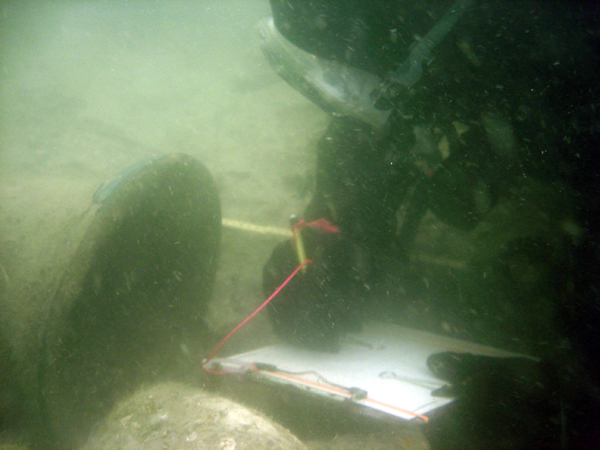When I first started doing my studies of archaeology at the university, I was surprised to discover how much very small things can tell about a long extinct society. My own revelation came in the form of potsherds - broken pieces of pottery. Entire legions of archaeologists are devoted to the study of potsherds and even a small sampling of them can tell volumes about the time they came into existence, the people who created them and the society that those people lived in. Now, once again the small things are showing their importance to understanding our past.
In this instance the key objects consist of a button and two coins found near the vast underwater ship graveyards of St. Augustine. These three artifacts are providing researchers with clues that reveal the origins of some of the ships in the area. With more than 50 known wrecks at St. Augustine, sorting through them all can be quite the task.
The button is from a uniform and is marked with the number 74. This connects it to the 74th Regiment of the British Army, a Scottish military unit that was part of the British Revolutionary War fleet. This fleet was said to have fled from Charleston in 1782 and 16 of the ships were recorded as sinking in the region of St. Augustine. The coins may help to collaborate this link.
The next thing that archaeologists are looking to do is to find records of a cargo manifest and match it to the artifacts already found at the site. If successful, they will be able to put names to the ships and make positive identifications. All this because a button and two coins pointed them in the right direction.
Many people think that the world of archaeology is about finding great tombs and sunken treasure, but the truth of the matter is that it’s about finding many small clues to create a bigger picture. This reality may perhaps be less glamorous than Indiana Jones makes it look, but the connection of these small finds is far more intriguing and challenging.
